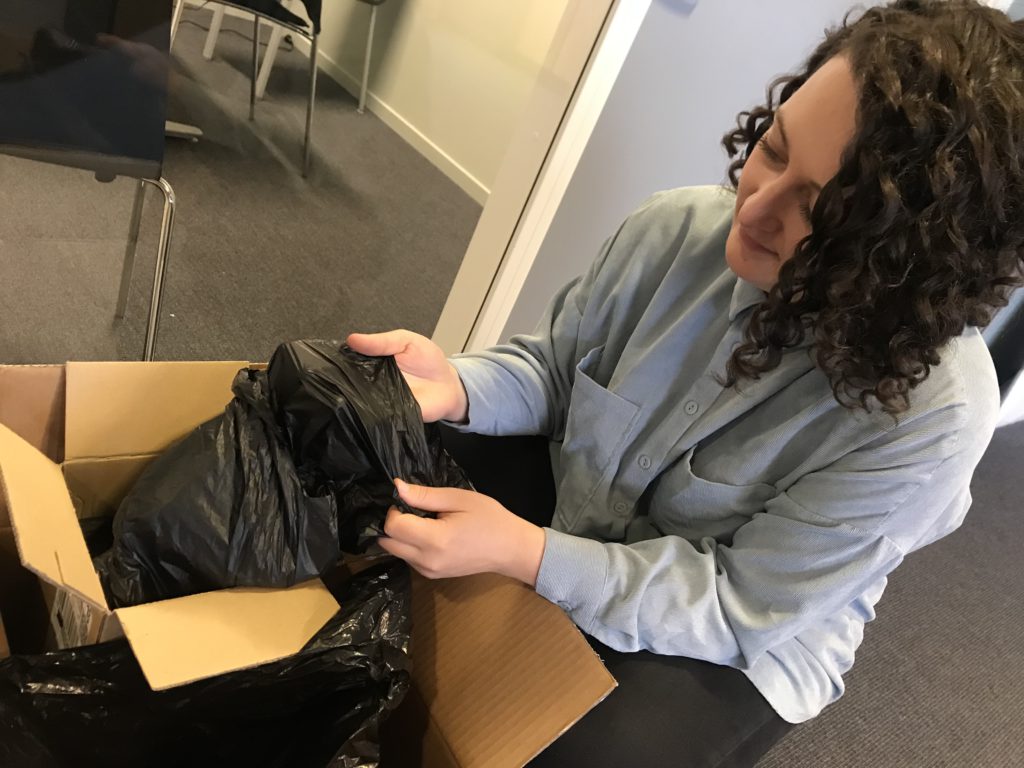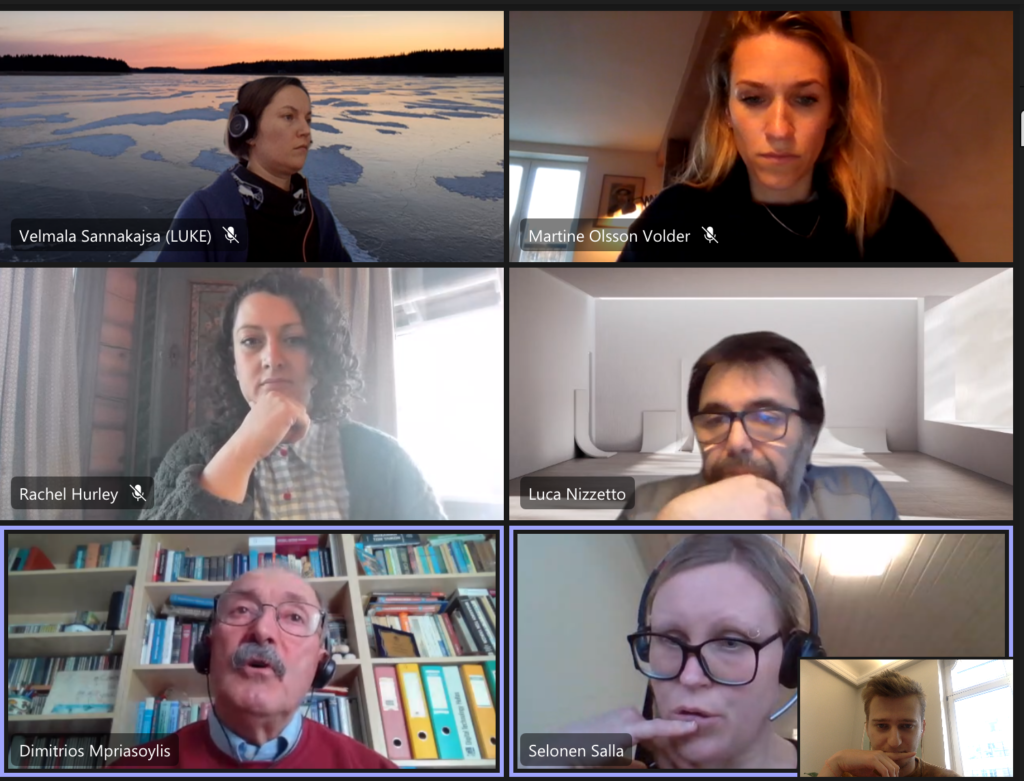
Dr Rachel Hurley PhD is a research scientist with extensive experience in the field of MP research (>7 years), including monitoring contamination, assessing fate and transport, and evaluating environmental impacts. She is the leader for Work Package 2 (Behaviour and transport) and works within the Norwegian Institute for Water Research (NIVA). See her publications here: https://www.researchgate.net/profile/Rachel-Hurley
How did you “fall” into the world of microplastics?
I first embarked on microplastic research during my PhD when I began investigating contamination of sediments in rivers. The microplastic topic had just started to emerge in the literature and the public consciousness and we realised that our sampling design gave us a great opportunity to look into important processes governing the fate and transport of small plastic particles in the environment. After this, I transitioned towards soil systems, spurred by the recognition of their important role as one of the primary environmental recipients of microplastic. Today, I conduct research into plastic pollution across a range of scales (macro-, micro-, etc.) in different terrestrial and freshwater environments.
How would you describe the task of your Work Package and your role within it?
I lead WP2 in the PAPILLONS project, which focuses on the behaviour and transport of micro- and nanoplastics (MNPs) in soil systems. In this work package, we will use a series of field, mesocosm, and laboratory-scale experiments to address persistent knowledge gaps about the fate of small plastic particles added to soils and the associated chemical additives. This includes assessing transport within the soil, uptake by animals or crops, and transfers to other environments. This will help to establish the scales of contamination and understand where the plastics that enter the environment will end up.
The plan is to analyse between 1000 and 2000 samples of soil and biota for microplastics. Could you tell us how that is done and what are the skills & knowledge that is required to be able to conduct an analysis for MNPs in soil?
Soils and biota represent complex, organic-rich sample types – this introduces analytical challenges associated with measuring microplastic content. What’s more, no validated method yet exists for assessing nanoplastic concentrations in these samples. However, PAPILLONS brings together partners with an established track record in handling these complex sample types and in building new methods for assessing plastic concentrations. We have set an ambitious plan to address persistent knowledge gaps and establish a high throughput approach that can facilitate analysis of a large number of samples. An important component of this is harmonising methods between analytical laboratories and engaging in ongoing collaboration to address analytical challenges and share the many insights gained along the way.
Practically, we analyse these samples by first reducing the organic content as much as possible whilst also preserving the plastics particles. We also separate away the high density component of the samples – for example, mineral particles – by using saturated salt solutions to float out the microplastics. Once we have isolated the microplastics from the rest of the sample, we can analyse them using different spectroscopy or mass spectrometry-based techniques, which gives us data on the presence or concentrations of different polymer types.

Could you tell us what is the fate of MNPs within agricultural soils?
At present, we don’t yet know where the plastics that enter soils will end up. This represents an important question, which we will address as part of the PAPILLONS project. If plastics remain in the soil, they may accumulate over time – especially after successive inputs – and reach concentrations that begin to impart negative impacts that can affect soil functioning and health. On the other hand, if plastics are effectively washed from fields, soil environments can become a source of contamination to other environments – including streams that can transfer plastic to the marine environment. If small plastic particles are taken up by animals or plants, they may impair their health and have knock-on consequences for agricultural yields and food security. So, the fate of MNPs represents an important knowledge gap in understanding what problems might be posed by soil contamination.
Do you have any preliminary thoughts or expectations about your research?
We do have some preliminary expectations thanks to previous research. A small number of pioneering studies have already begun to investigate the fate and transport of plastics in agricultural environments. These studies have helped to shed a light on the complexity of soil systems, globally. Factors such as the physical properties of soils or the characteristics of the local environment or climate can impart a strong control on the behaviour of MNPs in soil. We can expect similar results in the PAPILLONS project, but thanks to this early research we can focus project efforts on the variables that are likely to be most important.
How is the MNPs contamination of European agricultural soils compared to the rest of the world? Does it face a more significant problem here or outside Europe?
This is something that we aim to find out during the PAPILLONS project. There are currently only a handful of studies that have investigated MNP contamination of agricultural soils, globally. This makes it difficult to conclude on the geographic distribution. What’s more, many studies use different methods or definitions which can impair comparability. This issue transcends soil MNP research and there are ongoing initiatives to encourage harmonisation of methods and data reporting across the MNP research community. PAPILLONS will report data that adhere to principles of increasing harmonisation, to help facilitate greater comparability. Through this, we can begin to establish how different regions compare. In the PAPILLONS project, we will analyse several fields across Europe that are subject to different agricultural practices and plastic exposures. This will help us to better understand the patterns of contamination across the continent. We can there compare this to other studies that emerge for other parts of the globe. We already know that processes that may lead to MNP release from agricultural plastics differ, but until we have assessed the status of European soils, it is difficult to say how they will compare.
Could you tell us what’s the role of reference material and how were they selected?
The PAPILLONS reference materials are well-characterised batches of plastic particles that represent relevant typologies of MNPs that might be found in agricultural soils. By using reference materials, we can ensure that relevant exposure scenarios are used, and we can provide standardised materials across all the experiments. This allows us to control for some variables and compare results from across different parts of the project. In the PAPILLONS project, we are producing a suite of different reference material that resemble the characteristics of real MNP particles derived from agricultural sources. These will be used to test the fate and impacts of MNPs in a series of controlled experimental settings. We have selected relevant material types by assessing the dominant plastic products used in agricultural production in Europe, including both conventional non-degradable and biodegradable plastics.
